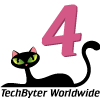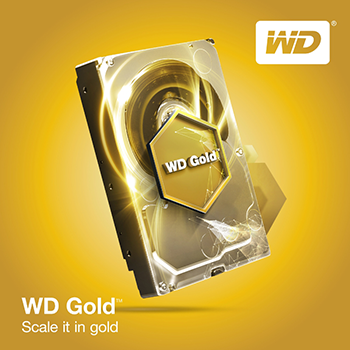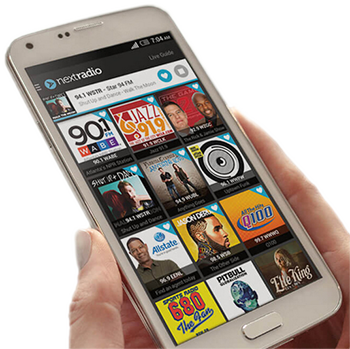CyberLink Power Director 14 is surprisingly powerful for an application that costs just $200 (but seems to be perpetually on sale for $70). It has one of the fastest rendering engines I've ever seen, offers a variety of flashy transition effects and a seemingly endless variety of additional plug-in features that you can buy. But for all the power and speed, it has the annoying habit of crashing frequently.
The interface is relatively standard for a consumer-grade video editor in that it offers two video tracks with audio, an effects track, a titles track, and two audio tracks -- one nominally for music and the other nominally for narration.
To test the application, I downloaded some video clips of New York City from VidEezy. Not all of the video tracks had the same frame rate. That's not recommended and it could be one of the reasons that I experienced a lot of crashes.
I've discounted that conjecture, though, because sometimes Power Director crashed when I merely clicked on the program interface.
Initially I just dumped all of my video clips onto the timeline and then produced a finished video. This is the "before" view.
When moving a video clip, sliding one clip over another, or dropping a video clip onto an existing clip, Power Director offers to overwrite the existing video, insert the video, or insert the video and move all other clips. In some cases, the application will also offer an option to cross-fade the clips.
The options offered seem always to be correct and logical.
The effects are somewhat more problematic. After accidentally dropping an effect on top of a video clip instead of onto the effects track, I found no way to edit or remove the effect. Instead, I had to delete that clip from the timeline and add it again from the media bin.
Even more frustrating is the apparent lack of transitions for the effects. In fact, I suspect that transitions can be applied to effects, but I was unable to learn how from the program's help file or the limited number of on-line instructional videos. So instead of gradually appearing and disappearing, the one effect you'll see in my finished video just appears (BAM!) and then disappears. (BAM!)
I'd like to see some improvement in this area.
Power Director 14 teases users with a list of 125 musical styles, but only 10 are available without additional charge.
Each of the available styles has several sub-styles. For my sample video, I selected the Clear Vision style. I found audio transitions to be rough even when cross-fade was selected, so I used only a single musical track for the entire video. That's possible because users can stretch the audio clip to any length and the program magically fills the space by expanding the selection.
One of Power Director's most striking features is the Produce panel. Most other programs will refer to this as rendering. Selecting incorrect options might be possible, but the developers have made it uncommonly easy to select the right options.
After you've made the selection, you'll probably be surprised by how quickly the finished video will be rendered.
Instead of taking 10 to 15 minutes to render my 2-minute video, Power Director did the work in just 2 minutes 31 seconds.
Here's my finished video.
Power Director 14 includes a separate screen recorder and an audio editor that I have not reviewed here. The combination is impressive and could be confusing. Fortunately, CyberLink provides numerous videos that explain how to use the application. Some are directed at beginners who will need information about how the interface works and others are directed at more advances users. The videos are categorized (general video editing, travel, action sports, wedding, commercial production, and YouTube). Users could easily spend many hours viewing videos to learn how to improve their video editing techniques and understanding some of the application's many nuances.
Despite the impressive features, Power Director 14 crashed far too often. In the early days of personal computers, I learned to save documents every time I finished a paragraph. I found myself doing the same thing with Power Director 14 so that I wouldn't lose any work.
Once the application even crashed during the save process and then it had to recover a previous version when I restarted it.
 Uncommon and powerful capabilities are marred only by crash problems
Uncommon and powerful capabilities are marred only by crash problemsCyberLink's Power Director 14 was a surprise. Given its relatively low cost, I didn't expect much and scheduled a short period for the review. Far too short. I had expected to run this review several weeks ago. Power Director 14 would easily have earned 5 cats had it not crashed so frequently. I'll keep an eye on this application and hope to check out the next version.
Additional details are available on the CyberLink website.
When the Surface tablet came out, I thought it was an interesting device, but didn't buy one. The Surface 2 was more compelling. The 3 even more so, but I resisted. Then came the Surface 4. I bought one and I've generally been happy with it. "Generally happy" however is not "delighted". The video driver has a nasty habit of crashing. The problem is really a combination of bad firmware and bad drivers from Intel, so it's not really a Microsoft problem. But it is a Microsoft problem because it has affected most, if not all, versions of the Surface. Updates over several years haven't had much effect on the problem, but now maybe it's fixed.
Maybe. On 20 April, just about every driver on the Surface was updated. Normally these updates are for just a few devices. Thirty-two in all. I've received many of them, but still not all. The ones that were of most interest to me include Intel Corporation driver update for Intel HD Graphics 520, Intel Corporation driver update for Intel Display Audio, Intel driver update for Intel Imaging Signal Processor 2500, Microsoft driver update for Surface Dock Integration, and Microsoft driver update for Surface Dock Firmware Update. These are the ones that are most likely to resolve the problem.
The video driver crash has been more of an annoyance than a real problem. Recovery takes just a few seconds. Still, it has generated hundreds of comments on Microsoft's support site. Based on my use over the past few days, I believe that the problems have at least been reduced and may have been eliminated. That said, there are scattered reports by Surface 3 and Surface Book users that they are now seeing other problems.
Incidentally, buying a Surface-like tablet from a Microsoft competitor won't shield you from the problems. The root issues are with Intel hardware and Intel drivers.
Amazon Prime members are automatically enrolled in the company's video streaming service. The Prime enrollment fee is paid in a lump sum, once a year, but now Amazon is offering streaming video for $9 per month and Amazon Prime, including video, for $11 per month. That could do some damage to Netflix.
Netflix will soon increase its monthly fee to $10, so Amazon's video costs $1 less per month or, if you want Prime with it and no-extra-cost 2-day shipping, $1 more than Netflix. Hulu's prices are $8 per month with commercials or $12 per month without commercials. All of the prices are really a penny per month less because marketers think that $11.99 appears to be a lot smaller than $12.
If you like the idea of Amazon Prime, you'd be better off spending $100 to buy a year's membership instead of $11 per month, which comes out to $132 per year. Video has been just an add-on for Amazon, but now it appears that the company has decided to make it a primary service.
Amazon offers some exclusive videos such as Bosch, Orphan Black, and The Americans -- shows that aren't available on Netflix. Netflix has about 75 million subscribers worldwide, though, and has exclusives of its own that aren't on Amazon Prime. Amazon has added the popular PBS series, Downton Abbey and children's programming from Nickelodeon.
How big a deal is this? Good question. Amazon doesn't release information about how many Prime subscribers it has. Analysts estimate that Amazon is spending more than $3 billion every year to acquire content, so apparently enough people are watching to make those expenditures worthwhile.
Western Digital and Veritas Technologies are pushing what they call the HGST Active Archive System that combines Veritas NetBackup with Western Digital hardware. The system reportedly provides improved scaling and reduced backup complexity and cost to a "private cloud". The advantages include lower administrative costs and infrastructure overhead, including the costs associated with tape management, tape rotation, and off-site storage.
 Clearly this is not an option for home users. The system can scale from 672 terabytes on the low end to 28 petabytes. "The HGST Active Archive System and Veritas NetBackup solution allows customers to protect any workload, and deliver an optimized, scalable, and easy-to-manage storage solution to meet customer data SLAs" according to Brian Greene, a senior director at Veritas.
Clearly this is not an option for home users. The system can scale from 672 terabytes on the low end to 28 petabytes. "The HGST Active Archive System and Veritas NetBackup solution allows customers to protect any workload, and deliver an optimized, scalable, and easy-to-manage storage solution to meet customer data SLAs" according to Brian Greene, a senior director at Veritas.
Western Digital has a new disk color, too: Gold. Gold data center hard drives are designed for small- to medium-scale enterprise servers and rack-mount data center applications.
The drives are available in capacities up to 8TB to reduce the space required by disk drives. Western Digital sells specialized disk drives that are identified by color: WD Red, WD Purple, and WD Blue. Brendan Collins, vice president of product marketing says that WD Gold is top of the company's color portfolio. It's "another step in creating optimized drives for the markets we serve. Our continued goal is to deliver the most competitive and reliable solutions on the market."
WD Gold data center hard drives include improved power efficiency, better performance, high reliability, and dedicated premium support. More information about the WD Gold hard drives is on the WD website.
NextRadio will start carrying programs from the Public Radio Satellite System so public radio stations that air national shows can automatically send the feed to NextRadio. The added value NextRadio brings includes images and other descriptive information about the program.
 The Public Radio Satellite System created what's called the MetaPub platform to allow local and national public radio programs to display images, text, and promotional materials. Initially the offerings will be limited to Morning Edition (NPR), All Things Considered (NPR), Classical 24 (APM), BBC World Service (APM), Weekend Edition Saturday (NPR), Weekend Edition Sunday (NPR), and Weekend All Things Considered (NPR).
The Public Radio Satellite System created what's called the MetaPub platform to allow local and national public radio programs to display images, text, and promotional materials. Initially the offerings will be limited to Morning Edition (NPR), All Things Considered (NPR), Classical 24 (APM), BBC World Service (APM), Weekend Edition Saturday (NPR), Weekend Edition Sunday (NPR), and Weekend All Things Considered (NPR).
NextRadio president Paul Brenner notes that public radio news/talk programs have seen listenership increase dramatically. Offering the new features, says Brenner, "will allow the station to provide a richer listening and viewing experience."
NPR vice president Michael Beach says that the integration of enhanced metadata into broadcast content is a "logical next step to ensure public radio listeners have the best possible experience with their favorite shows" via NextRadio's FM smart phone app.
The NextRadio app modifies how you listen to FM radio on your smart phone. Stop and think about that for a moment. I'm talking about listening to FM radio on your smart phone. The app provides a real-time view of what's playing, so you don't have to wait for someone to tell you. It also enables interaction with your favorite NPR station.
The Public Radio Satellite System is the distribution network through which news, music, and specialized audience programming are delivered every year to public radio stations. Managed by NPR Distribution, the PRSS is a cooperative enterprise and each participating station is a stakeholder in the collective assets of the satellite system. Stations own their downlink and uplink equipment.